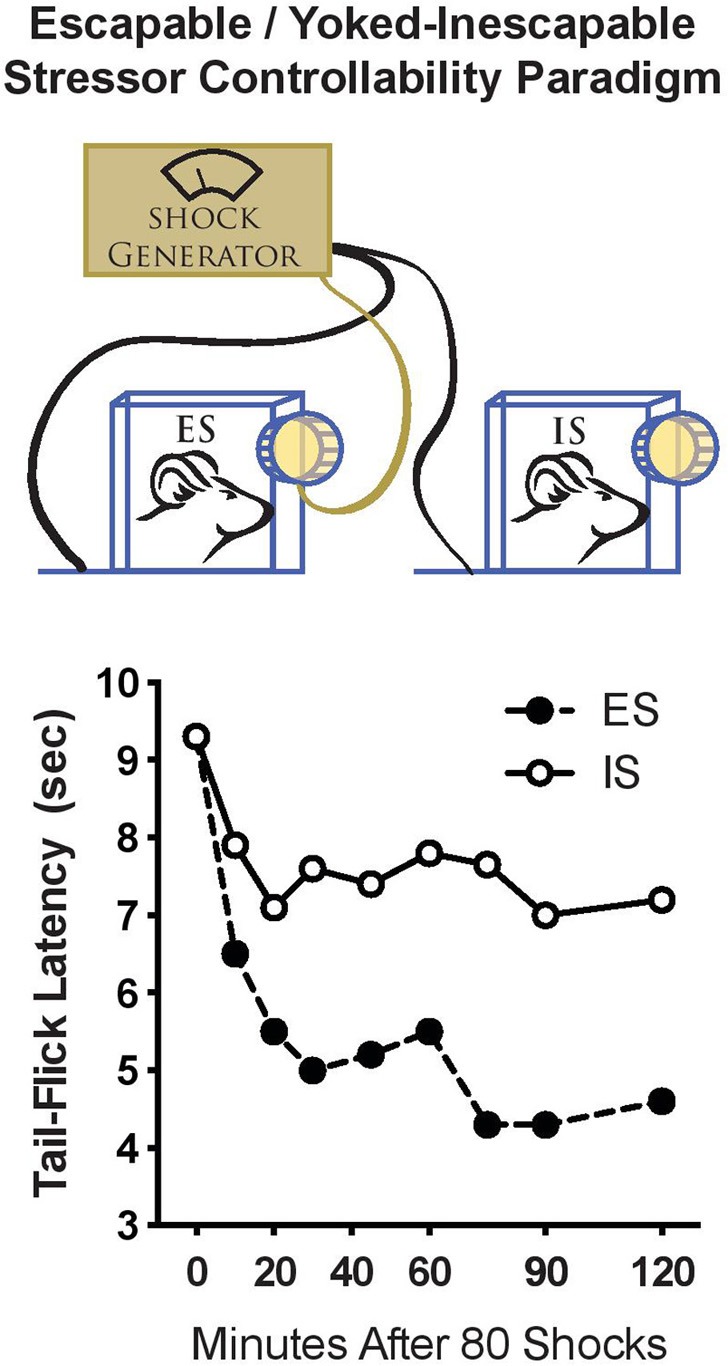Figure 1.

Stressor controllability and resilience to tailshock. Top: A schematic diagram of the stressor controllability experiment. Rats are assigned to either escapable stress (ES), inescapable stress (IS), or no stress. Rats in the ES group receive a series (usually 80–100 trials) of tailshocks while restrained in a chamber with a wheel that is connected to a controlling computer. Rats in the ES group may escape from shocks by turning the wheel. Rats in the IS group are “yoked” to the ES rat such that shock is terminated for the IS when the wheel turn response is made. The wheel in the IS chamber is not connected to the computer, so these rats do not have control over shock onset or offset. Importantly, each rat in the pair receives exactly equal tailshock. Bottom: Stressor controllability and analgesia. Rats were exposed to 80 trials of ES or IS, and pain tolerance was quantified using the tail-flick reflex to heat applied to the tail at various times after stress. Both ES and IS rats displayed analgesia immediately after stress. However, analgesia persisted for 2 h after IS while ES rats recovered (adapted from Drugan et al., 1985a).
